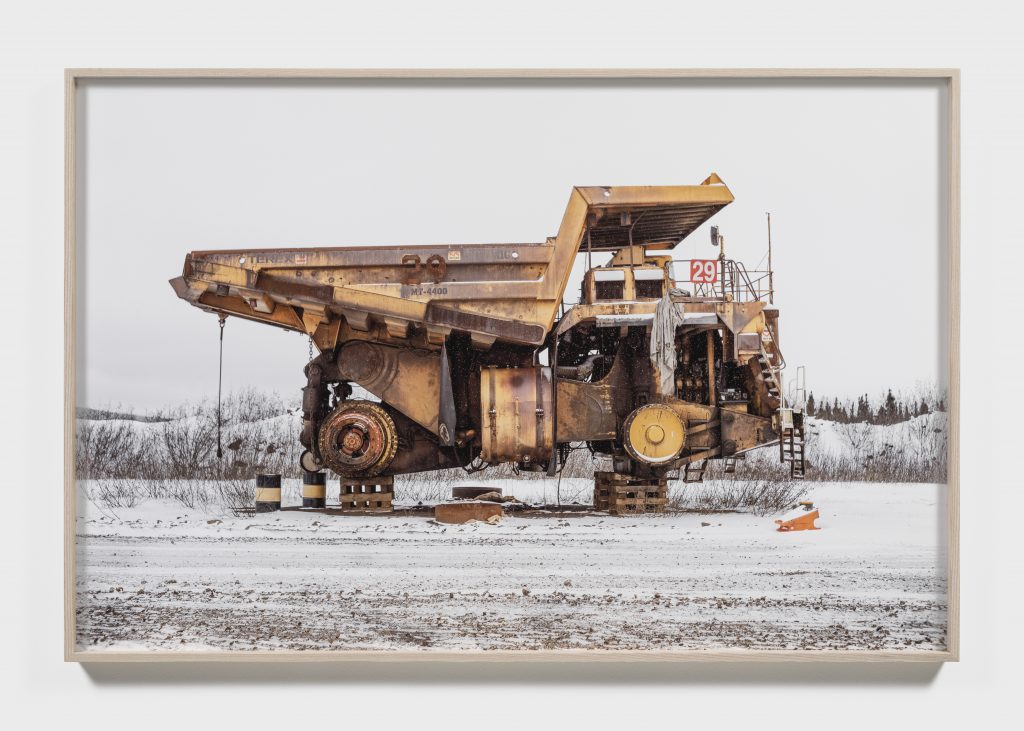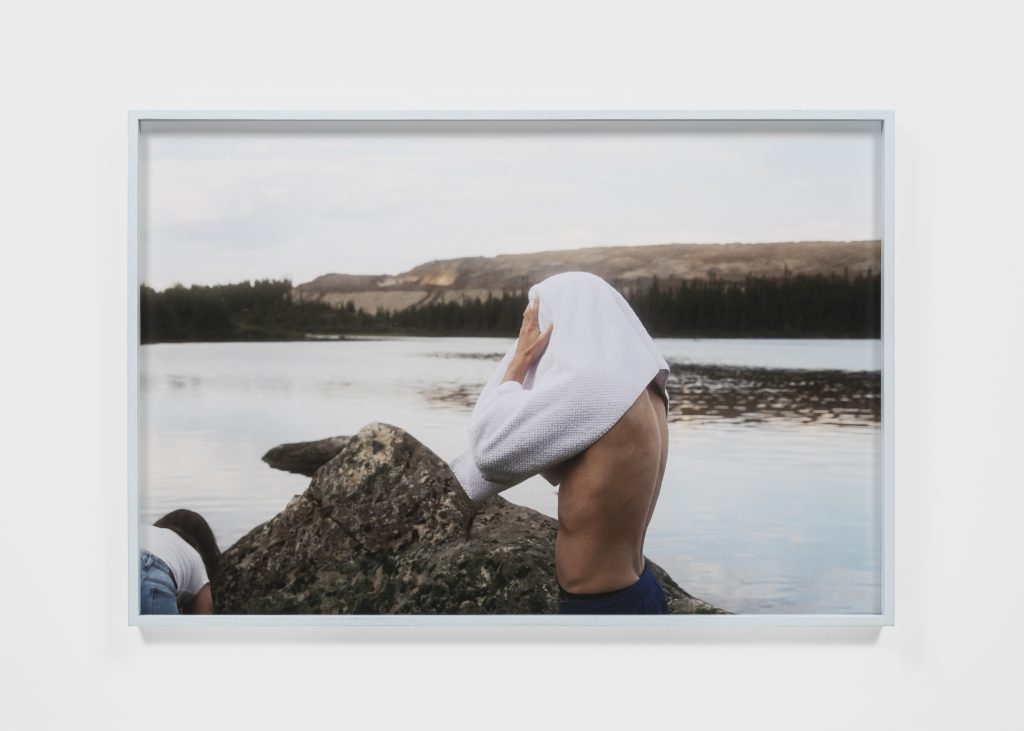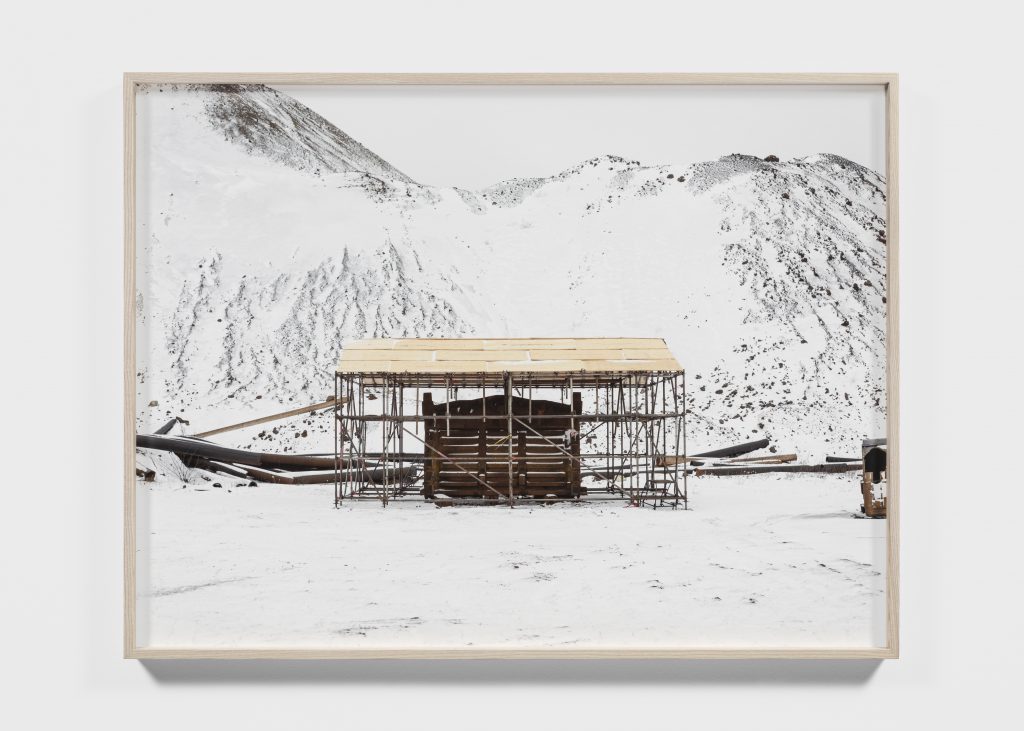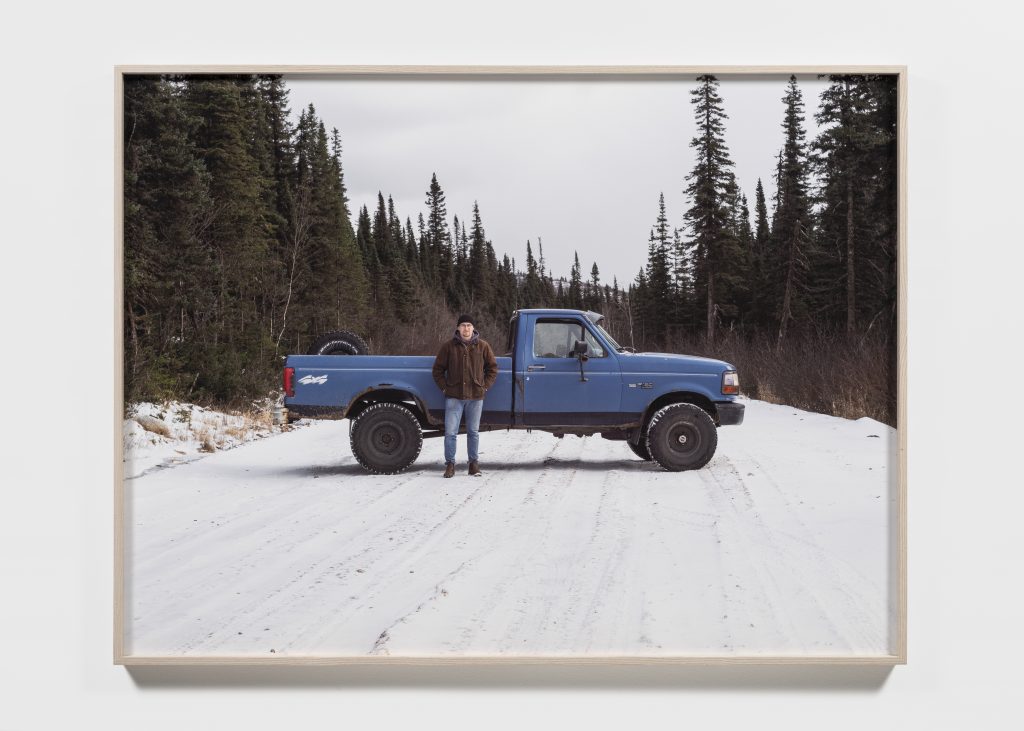The other side of iron – Tanea Hynes
Artist Tanea Hynes grew up in Labrador City, a remote town in Newfoundland and Labrador, Canada, centred around one thing: iron ore mining. In her work, Hynes reflects on the impact of this industry on the people, nature and identity of the region. Through photography, drawings and installations, she explores how labour, nature and capitalism are intertwined.

Tanea Hynes' work can be seen at the KIN booth in the New Art section.
A city built on iron
The name might be somewhat misleading, as Labrador City is not a city in the usual sense of the word. It is not a regional trade hub, it lacks a rich cultural life and young people do not move there for education. In Labrador City, everything revolves around mining, the starting point of a global production chain.
The town emerged in the 1960s after the discovery of a large iron ore deposit in the region. It was built according to the utopian ideals of the late 19th-century Garden City movement, intended to create a community where miners and their families could live well. For some time, those expectations were met. In its early years, the Iron Ore Company of Canada invested in modern facilities and social programmes, but after acquisitions by multinationals like Rio Tinto and Mitsubishi, these amenities disappeared.
These social programmes were not a luxury, given that the surrounding area consists of nothing but forest and wilderness. If someone were to go missing in the woods, finding them would be like searching for a needle in a haystack, Hynes notes in her graduation project. The nearest major city, Montreal, is 1,250 km away as the crow flies—roughly the distance from Rotterdam to northern Spain. The population currently fluctuates around 7,500. At its peak in the mid-1970s, the town had 12,000 residents.

These population fluctuations are linked to the global demand for iron ore. Born in 1996, Tanea Hynes has witnessed multiple boom-and-bust cycles over the past decades. Periods of economic prosperity have alternated with deep recessions, during which people lost their jobs, mortgages went unpaid and houses became unsellable. These cycles leave not only an economic imprint, but also shape the social fabric of the town. Labrador City has its own class system of miners and management, each with its own interests, often clashing over labour conditions and wages.
The mine as lifeline and curse
Hynes' own life is inextricably linked to mining. To finance her studies, she spent five summers working as a truck driver in an open-pit mine. She experienced firsthand the physical and mental toll of the work and relentless pressure to increase production. The mines operate 24/7, 365 days a year, and work only stops in the event of serious accidents.
Reflecting on this experience, Hynes writes:
"This experience helped to shape my perspective on global economics, natural resource extraction, human impact on ecological systems, labor politics, and the world at large. I hold an understanding of the unforgiving demands of the mining industry and the place of myself, my family, and my closest friends within that system. I have experienced many close calls and felt the pressures of the endless push for faster production. Furthermore, I have felt my own body resist in ways that I cannot put into words. These experiences fuel my desire to create urgent works of art and photographs, attempts to materialize what can only be felt in one’s gut."
This relentless pace impacts not only the workers, but also the landscape. Hynes' work focuses on both. In theoretical discussions, mining is often—and rightly—equated with environmental destruction. But for those embedded in such a community, like Hynes, mining is more than just devastation. Alongside boredom, addiction and physical pain, there is also hope, solidarity and resilience. She highlights people who care about the natural world and rely on it for physical and mental well-being, relaxation and joy. Her images capture miners spending their free time in nature, seeking peace in the same ecosystem they extract resources from during the week. The relationship between miners, the mine and nature is therefore highly complex.

Testimony and protest
Hynes' work is often compared to the documentary tradition of Newfoundland and Labrador. In the 1950s–1970s, documentaries played a key role in exposing social inequality and the consequences of large-scale mining. Since then, the mining industry has preferred to stay out of the media, keeping its gates closed to outsiders.
In the fall of 2023, a childhood friend—now in a management position—invited Hynes to photograph a mine. She was surprised at how casually the offer was made. Her upbringing in Labrador City and her connection to the community likely played a role, making her an insider. It may also relate to her less overtly activist approach compared to past documentary filmmakers. Hynes acknowledges the paradox of mining: it is destructive, yet it provides her community’s livelihood.
This paradox is evident in her description of the images she captured in the mine: "While this industry provides vital metals to the ever-expanding world at large, these scenes represent the epicenter of so much chaos, of pain, addiction, sadness, and bleak degradation." She recognises the importance of mining, yet the cost is undeniably high.
Remediated
In her series Remediated, Hynes juxtaposes images of the mine with pictures of abandoned landscapes where nature is attempting to recover. Sites that were once bustling workplaces are now scars on the land. She poses a crucial question: What remains when the resources are depleted and the mines are abandoned?
Long-term damage from mining is often shifted onto local communities like Labrador City. This series is not on display at Art Rotterdam, but does it gives us an idea why Hynes remains hopeful: "Remediated, along with the portraits in my exhibition, communicate that there is a path forward, and that we are already on that path. The way forward is not only through physical remediation of the land, but in meaningful, mutually beneficial communion with both the land and with each other."

The road ahead
For Hynes, the way forward lies in an Indigenous, anti-colonial perspective—one that does not consider the earth a collection of extractable commodities, but as an extension of ourselves. In this view, the earth nurtures us and embodies languages, stories and histories.
The broader theme underlying Hynes' work is humanity’s relationship with the land. Mining occurs worldwide—Labrador City is only one example. The scale surpasses the individual and likely even our imagination. Millions of tons of rock are moved, rivers rerouted and mountains erased. The miners of Labrador City are merely one link in a vast system. They never see the end products of their labour, as the extracted materials are processed elsewhere.
Hynes' work is both a stark reminder that every industry carries a human and ecological cost and a plea for a new way of thinking about land use. Rather than viewing the earth as an endless source of economic gain, we should see it as an extension of ourselves, a place that deserves care and respect.
Written by Wouter van den Eijkel


